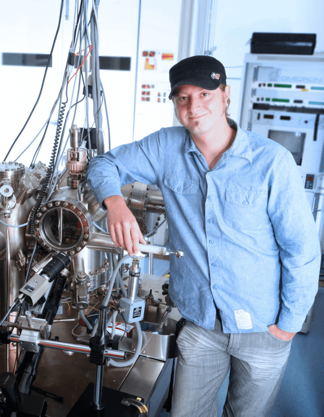
搜索网站、位置和人员

新闻与活动 活动信息
Physics Colloquium | Bent Weber: Proximity-Induced Superconductivity in Epitaxial Quantum Spin Hall Heterostructures
时间
2021年02月23日(周二)
下午14:00-15:30
地点
西湖大学云栖校区4号楼211会议室,Zoom在线会议
主持
西湖大学理学院 郑昌喜 博士
受众
全体师生
分类
学术与研究
Physics Colloquium | Bent Weber: Proximity-Induced Superconductivity in Epitaxial Quantum Spin Hall Heterostructures
时间:2021年02月23日(周二)下午14:00-15:30
Time: 14:00-15:30, Tuesday, Feb. 23rd, 2021
主持人:西湖大学理学院 郑昌喜 博士
Host: Dr. Changxi Zheng, PI of School of Science, Westlake University
地点:西湖大学云栖校区4号楼211会议室,Zoom在线会议
Venue: Room 211, Building 4, Yunqi Campus, Zoom Meeting
线上:Zoom在线会议(会议号:857 070 9222)
Online: Zoom Meeting (Meeting ID: 857 070 9222)
主讲嘉宾/Speaker:

Prof. Bent Weber
Division of Physics and Applied Physics, School of Physical and Mathematical Sciences, Nanyang Technological University
主讲人简介/Biography:
Bent Weber is Singapore National Research Foundation (NRF) Fellow and Nanyang Assistant Professor (NAP) of Physics at Nanyang Technological University (NTU) Singapore. Weber obtained his PhD from the Centre for Quantum Computation and Communication Technology (CQC2T) at The University of New South Wales (UNSW), where he developed atomic-scale silicon quantum devices by scanning tunnelling microscopy. His work on donor-based spin qubits was published in a range of high-impact papers, including Science, Nature Nanotechnology, Nano Letters, npj Quantum Information, and Physical Review Letters. Weber has held an Australian Research Council (ARC) DECRA fellowship at Monash University, Australia, and is an Associate Investigator of the ARC Centre of Excellence in Future Low Energy Electronics Technologies (FLEET). Weber’s group at NTU employs complementary local probe and transport spectroscopy to investigate 2D and topological materials for their potential in quantum device applications.
讲座摘要/Abstract:
The interplay of topology and superconductivity in condensed matter has become a subject of intense research for its importance in realizing and advancing approaches to Majorana based topological quantum computing. Atomically thin (2D) topological materials – such as the quantum spin Hall (QSH) insulator – promise large intrinsic band gaps, that are robust to disorder and can carry topological superconductivity without the necessity to apply external magnetic fields. Yet, reports of superconductivity in atomically thin QSH systems are sparse, given the significant challenge to achieve stability and uniformity via high-quality crystalline and atomically abrupt interfaces. Here we show that both can be achieved in epitaxially grown van-der-Waals heterostructures of the quantum spin Hall insulator 1T’-WTe2and the layered van-der-Waals superconductor 2H-NbSe2.
We report stable proximity-induced superconductivity with pairing amplitude as large as 0.6 meV, resolved by scanning tunnelling spectroscopy at 500mK. We describe both the intrinsic superconductivity of the substrate, and that induced in WTe2, within a self-consistent framework of multiband superconductivity, allowing us to untangle their respective contributions to the superconducting density of states. Comparison with mean-field theoretical models confirms the magnitude of the induced pairing amplitude in both WTe2QSH bulk and edge – a result of a strong hybridization of electronic state with the substrate. The realization of a superconducting quantum spin Hall platform may have implications for QSH based topological quantum computation.
讲座联系人/Contact:
理学院 钟老师 zhongmengzhen@westlake.edu.cn
School of Science, Ms. Zhong, zhongmengzhen@westlake.edu.cn

















